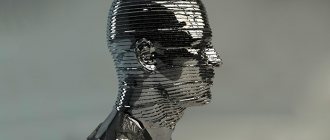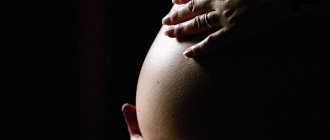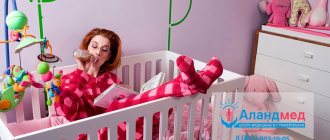Almost every modern parent has heard about the concept of a hyperactive child, and many even use it in relation to their children. But not everyone really understands that hyperactivity syndrome is not a fancy name for increased childhood activity, but a kind of disease that is caused by impaired functioning of the brain and can seriously affect, first of all, the life of a child and his relationships with peers. At the same time, we must not forget that sooner or later children grow up and become adults, and hyperactivity syndrome may continue to haunt them.
What is hyperactivity
Hyperactivity is a condition in which there is increased excitability of the child, which is manifested by excessive speech and motor activity. This is often combined with attention deficits and impulsivity, which in medical terms is called attention deficit hyperactivity disorder (ADHD). Very often this is accompanied by behavioral disorders and emotional instability. As a result, the child is constantly in a state of nervous tension, which he tries to relieve through physical activity. In general, he simply cannot behave differently, much less consciously correct his own behavior.
But the child’s increased excitability causes a lot of problems, both for his parents and teachers, and for himself. Disruption of the nervous system leaves an imprint on his relationships with peers and adults, which ultimately often becomes the cause of psychological problems and complexes.
At the same time, there may be a lack of attention, which most often forces parents to seek help from specialists. Problems with concentration and perseverance cause negative feedback about the child’s work in classes in kindergarten, other preschool institutions, and then at school.
According to medical statistics, hyperactivity syndrome is diagnosed in 6% of school-age children and 3% of adolescents, while boys suffer from it 5-6 times more often.
A neurobehavioral disorder should not be confused with hyperactivity. The vast majority of children cannot sit still for a long time and strive for active games. But with hyperactivity, there is a truly pathological inability of the child to behave calmly, which creates problems even for himself. This term means not just a diagnosis, but a whole complex of disorders, united by the presence of individual signs that do not correspond to a specific age, which explains the versatility of the manifestations of the syndrome.
Thus, ADHD can manifest itself in different children in different ways, on the basis of which its varieties are distinguished. Some children may have both excessive mobility and attention disorder at the same time, while others may have only hyperactivity or problems with concentration. In the latter case, the child is impulsive; he constantly receives complaints from caregivers and teachers due to bad behavior, which, it must be admitted, he is not able to control on his own. But at the same time, such a child can successfully cope with solving problems that require concentration and attention. There are also situations when only attention disorder is present, but the child is not hyperactive, or mixed types are observed.
Therefore, reasons to consult a doctor if you suspect hyperactivity are:
- constant high activity and problems with concentration;
- the occurrence of difficulties when communicating with other people due to behavioral characteristics, in particular other children on playgrounds;
- persistent poor behavior in preschool settings;
- poor school performance and bad behavior;
- a complete lack of desire or even the ability to do homework independently;
- aggressiveness towards other people and animals.
Bibliography
- Vyatkin B.A., Shchukin M.R. Psychology of human styles: textbook. allowance / Ross. acad. education; Perm. state humanit.-ped. univ. - Perm: Book World, 2013. - 128 p.
- Vyatkin B.A., Shchukin M.R. Man - style - society: polysystem interaction in the educational space: monograph. - Perm, 2007. - 108 p.
- Merlin V.S. Essay on an integral study of individuality. - M.: Pedagogy, 1986. - 256 p.
- Merlin V.S., Vyatkin B.A. Temperament // General psychology: textbook. for pedagogical students Institute / ed. prof. A.V. Petrovsky. — 2nd edition, add. and processed - M.: Education, 1976. - P. 405–421.
- Psychological service in modern education: workbook / ed. I.V. Dubrovina. - St. Petersburg: Peter, 2009. - 400 p.
- Psychology of integral individuality: Perm school / comp. B.A. Vyatkin, L.Ya. Dorfman, M.R. Shchukin. - M.: Smysl, 2011. - 636 p.
- Sambikina O.S. The relationship between the development of the style of educational activity and the integral individuality of junior schoolchildren and adolescents // Polysystemic study of human individuality / ed. B.A. Vyatkina. - M.: PER SE, 2005. - pp. 165–172.
Source: Vyatkin B.A., Sambikina O.S. Types of the nervous system and temperament as natural prerequisites for the formation of a student’s style of educational activity // Bulletin of the Perm State Humanitarian-Pedagogical University. Series No. 1. Psychological and pedagogical sciences. 2014. Vol. 1. pp. 81–100.
September 22, 2022 is the anniversary of Oksana Semenovna Sambikina , head of the Department of Theoretical and Applied Psychology of the Faculty of Psychology, head of the master’s program “Family Psychology and Family Counseling” at Perm State Humanitarian Pedagogical University. “Psychological Newspaper” congratulates Oksana Semyonovna and wishes her health, inspiration and strength for the implementation of all creative and scientific plans!
Causes
There are many assumptions about what exactly can provoke the development of hyperactivity syndrome in children, but not a single neurologist will be able to accurately name a complete list of them and trace a clear connection between any events and factors with the manifestation of hyperactivity. Today it is believed that it develops against the background of a combination of a complex of various disorders and external influences. Therefore, biological, genetic and psychosocial factors are identified, the presence of which contributes to the occurrence of hyperactivity and/or attention disorder.
Conducted studies confirm that the effect of a hereditary factor is found in 50% of children with this diagnosis. As for biological disorders, the main causes of the development of ADHD are considered to be cerebral-organic changes, that is, those that are accompanied by disturbances in the functioning of the nervous system, namely:
- premature or complicated birth, which affected the development of the nervous system or caused hypoxia (oxygen starvation);
- occupational hazards that a woman encountered during pregnancy, as well as smoking, drinking alcohol, and a number of medications;
- intrauterine infections;
- a pregnant woman experiencing stress or frequent physical fatigue;
- far from healthy diet during pregnancy;
- premature birth or “post-term” pregnancy;
- birth of a child before 20 years of age or after 40 years of age;
- metabolic disorders, especially those that tend to be inherited.
It is believed that a deficiency of high-quality protein foods, vitamins and minerals in the daily diet against the background of an excess of simple carbohydrates, especially consumed in large quantities in the morning (bread, rolls, sweets), creates favorable conditions for the occurrence of ADHD.
Psychosocial factors play an important role in the development of the disease, among which the most significant are considered to be:
- alcoholism and serious disagreements between parents;
- violence in family;
- the child's experience of psychological trauma;
- low social status of the family, lack of means of subsistence, which can be aggravated by ridicule from peers.
Inflated demands of parents on them, constant dissatisfaction with achievements, etc. contribute to the development of hyperactivity in children.
How does hyperactivity syndrome manifest?
The disease can first appear at any age, starting in infancy. It may be accompanied by:
- anxiety;
- restlessness;
- irritability, tearfulness;
- sleep disorders;
- decreased level of attention, constant distractibility;
- impulsiveness;
- stubbornness;
- delayed speech development.
For each age, separate standards have been developed, non-compliance with which makes one think about the occurrence of disturbances in the functioning of the nervous system. For example, very quickly switching to other surrounding objects, voicing random thoughts and memories is called distractibility, which is one of the most striking signs of attention deficit.
Another term often heard when diagnosing ADHD is “impulsivity.” This means that when a child receives a task, he does not listen to the end of the recommendation or instruction and begins to complete it prematurely. As a result, he usually underestimates the complexity of the task or handles it incorrectly because he ignored the requirements. At the same time, impulsive children are not able to think about the consequences of their actions, so they often get injured, become victims of accidents of varying severity and find themselves in unpleasant situations.
Hyperactivity or not
As already mentioned, very often healthy children's activity and spontaneity are confused with such a disorder of the functioning of the nervous system as attention deficit hyperactivity disorder. Parents may suspect the presence of ADHD by the presence of the following signs:
- the child is much more active than his peers (sometimes parents say that he is “running on the ceiling”);
- increased excitability, which is manifested by the presence of unnecessary movements (the child constantly twirls, dangles his legs, swings on a chair, plays with his hands, etc.) or speech incontinence (the child talks without stopping);
- absent-mindedness - with ADHD, children constantly lose and forget personal belongings, do not listen to instructions received from adults, even short ones, and are distracted;
- rapid onset of fatigue when it is necessary to complete tasks that require perseverance and concentration on the process - parents of schoolchildren are sometimes forced to constantly sit next to the child while doing homework and control them;
- increased emotionality, manifested by absolute incontinence and splashing out any emotions on others;
- the inability to bring the work started to its logical conclusion - the child loses interest in the activity and quickly moves on to another type of activity;
- lack of self-control, manifested by constant interruption of other people, difficulties when it is necessary to wait for one’s turn or where, a tendency to quarrels and fights;
- lack of coordination, as a result of which the child can often be injured.
Signs of ADHD always appear before the age of 7, but they most often begin to attract attention in the late preschool and school periods of a child’s life.
In addition, with ADHD in children over 4 years of age, parents may lose control over their behavior. Such children often not only do not listen to adults, but are incapable of negotiating and seeking compromise and generally following established rules. But such “symptoms” can appear together or separately in healthy children during a difficult psychological period, experiencing a crisis of 3, 6-7 years, etc. Therefore, parents should sound the alarm only if the child has several of the above-described violations, moreover, for longer than six months, and they prevent him from adapting to society.
Hyperactivity is a permanent condition. Therefore, children with this syndrome behave the same everywhere: at home, in kindergarten, at school, on a walk.
General characteristics of the properties of the nervous system and human temperament
As you know, there are no two people on Earth with the same skin patterns on their fingers, and there are no two completely identical leaves on a tree. In the same way, in nature there are no absolutely identical human personalities - the personality of each person is unique and inimitable.
However, a person is not born with an already formed personality. He becomes one gradually. But even before a person becomes an individual, he has individual characteristics that are manifested in behavior, activity, life, and various types of activity: emotional, intellectual, volitional, motor, communicative, etc. These mental characteristics are very conservative and stable. Changing much more slowly than the personality properties known to us, they form in each person a unique psychological soil, on which subsequently, depending on its characteristics, personality properties inherent only to this person “grow.” This means that the child’s psyche is not like a smooth board on which any patterns can be written, and that in the process of raising and teaching a child one must rely on the properties he has from birth. These properties are different for everyone.
Such stable and inherent individual properties of a person from birth are physiological properties such as the nervous system and their psychological manifestations - properties of temperament. What makes them unique? Imagine two rivers: one calm, flat, the other fast, mountainous. The flow of the first is barely noticeable, it smoothly carries its waters, it does not have bright splashes, stormy waterfalls, or dazzling splashes. The course of the second is the complete opposite. The river rushes quickly, the water in it rumbles, seethes, bubbles and, hitting the stones, turns into shreds of foam. The flow characteristics of these rivers depend on a number of natural conditions.
Something similar can be observed in the dynamics (features of the flow) of the mental activity of different people. For some people, mental activity proceeds evenly. Such people are always outwardly calm, balanced and even slow. They rarely laugh, their gaze is always stern and cold, their movements are stingy and expedient. Finding themselves in difficult circumstances or in a “ridiculous” situation, these people remain outwardly unperturbed. Their facial expressions and gestures are not varied and expressive, their speech is calm, their gait is firm. For other people, mental activity occurs spasmodically. Such people, on the contrary, are very active, restless, noisy, and always lively. Their speech is impetuous and passionate, their movements are chaotic, their facial expressions are rich and varied. Often, even in ordinary conversation, their words are accompanied by gestures - a person waves his arms, stamps his feet. They are always fussy and impatient. In other words, the properties of the nervous system and temperament are those that are natural, i.e. innate properties that determine the dynamic side of human mental activity [4].
A scientific explanation of their nature was given by Academician I.P. Pavlov in the doctrine of the basic properties of the nervous system. He identified the following three main properties: 1) the strength of the process of excitation and inhibition, depending on the performance of nerve cells; 2) balance of the nervous system, i.e. the degree of correspondence between the excitation force and the braking force (or their balance); 3) mobility of nervous processes, i.e. the rate of change from excitation to inhibition, and vice versa. I.P. Pavlov found that temperament does not depend on any one of these properties, but on their combination. He called this combination of properties of the nervous system, which determines both the individual characteristics of conditioned reflex activity and temperament, the type of nervous system. I.P. Pavlov distinguished four main types of nervous system:
- strong, unbalanced (with a predominance of the excitation process),
- strong, balanced, agile,
- strong, balanced, inert,
- weak.
Identified I.P. Pavlov, the main combinations of properties, or types, of the nervous system, on which temperament depends, are common in humans and animals. Therefore they are called general types. These general types of the nervous system underlie the four traditional types of temperament: choleric, sanguine, phlegmatic and melancholic, which are quite clearly expressed already at school age.
Sanguine.
This is a subject with a strong, balanced, mobile type of nervous system. A sanguine person is distinguished by increased reactivity, which manifests itself in the liveliness with which his emotional nature responds to everything. He is characterized by great activity - he is able to show significant energy, efficiency and perseverance. The activity and reactivity of a sanguine person are balanced - he can restrain feelings and worries. The reaction rate is quite high, so he loves fast movements. A sanguine person is characterized by high plasticity and extroversion, as a result of which he is sociable, easily gets used to new people and conditions, easily moves from one type of activity to another, but is not sufficiently diligent and focused, especially in conditions of monotonous work. During the learning process, he quickly grasps the main points, but makes mistakes. Does not like painstaking and lengthy work to master complex knowledge or develop skills and abilities. He is quite efficient, self-confident, the results of his activities are stable and, as a rule, in important situations (exams, competitions, etc.) are higher than in the situation of a regular lesson or training.
Choleric.
Has a strong, unbalanced (with a predominance of excitation) type of nervous system. He, like the sanguine person, is characterized by high reactivity, activity, and a fast pace of reactions. But his reactivity prevails over activity, and therefore in a difficult situation he easily becomes hot-tempered, abrupt, and quickly loses his temper. Like a sanguine person, he loves fast movements, willingly and enthusiastically begins to engage in his chosen activity, but quickly cools down. Does not like long and monotonous work. His results are not stable enough, because he is prone to excessive excitement before starting responsible work, which often does not allow him to fully realize his capabilities.
Phlegmatic person.
This is a person with a strong, balanced, inert type of nervous system. Unlike sanguine and choleric people, he has little reactivity, so it is difficult to anger him. Minor emotional excitability allows him to remain calm before serious, responsible work. High activity prevails over low reactivity, which determines patience, endurance and self-control. A phlegmatic person's movements and speech are slow, reactions are delayed. He is characterized by rigidity and introversion, which determines the stability of habits and skills, and low sociability.
Melancholic.
A subject with a weak type of nervous system. The most characteristic of it is high sensitivity, manifested in painful sensitivity and vulnerability. Low reactivity and reduced activity contribute to the fact that he is easily “lost”, quickly gets tired, and lacks self-confidence. The melancholic person is responsible, but is not efficient enough and is not resistant to external stimuli. High anxiety often gives rise to self-doubt and low self-esteem. In a situation of responsible work, a melancholic person, as a rule, shows less good results than in the course of everyday activities.
Diagnosis of ADHD
No matter what kindergarten teachers, teachers, other parents or acquaintances say, only a doctor can accurately assess the child’s condition, and only a neurologist or child psychologist can diagnose hyperactivity syndrome with or without attention impairment. Teachers or other people communicating with the child can only draw the parents’ attention to certain personality traits of the child, the existing difficulties when working with him, and suggest the need to obtain specialist advice.
When diagnosing ADHD, the doctor must exclude other pathologies of the nervous system and developmental disorders. Therefore, consultations with both specialists – a neurologist and a psychologist – are often required. This will allow you to accurately differentiate ADHD from:
- consequences of psychological trauma, anxiety disorders;
- autism spectrum disorders (may be combined with hyperactivity);
- certain types of schizophrenia, epilepsy;
- endocrine pathologies.
Therefore, the diagnosis cannot be made at the first consultation with a doctor. To do this, in addition to a detailed conversation with the child and his parents, it is necessary to observe his behavior, as well as conduct neuropsychological testing. To exclude other pathologies, the following are prescribed:
- general and biochemical blood test;
- EEG;
- MRI of the brain;
- ECG and other studies.
The role of the properties of the nervous system and temperament in human activity
If we evaluate the above characteristics, we can note that each of them has both positive and negative properties. Thus, a sanguine person is emotional and has good performance, but his motives are unstable, and his attention is also unstable. A melancholic person is characterized by less efficiency and greater anxiety, but he is a sensitive person, as a rule, careful and prudent. Consequently, there are no “bad” temperaments, no “good” temperaments - each temperament is good in some conditions and bad in others. It also does not determine the social value of a person - a person’s inclinations, worldview and beliefs, and the content of his interests do not depend on temperament.
Each activity places certain demands on the human psyche and its dynamic characteristics. These requirements cannot be changed arbitrarily, since they depend on objective reasons - on the content of the activity.
Temperament and the type of nervous system, determining the dynamics of activity, can influence its productivity. Their role is different in different types of activities. In educational activities and in “mass” professions (turner, mechanic, manager, doctor, teacher, engineer), some properties necessary for successful activity and weakly expressed in a given person can be compensated for by other properties and work methods determined by them . For example, it has been established that teachers with a strong mobile type of nervous system (sanguine by temperament) are characterized by an organizational and communicative style of activity in the classroom. Good organization of the lesson ensures its high efficiency. They predominate in disciplining with words, directly when violations of discipline occur or after them (they easily tolerate the effects of strong irritants), they use punishment to a lesser extent when organizing students, they often come into contact with students and directly with the class in order to convey educational information and discipline students . The constructive component of their activity is less pronounced than the organizational and communicative component. Their lesson plan, as a rule, is condensed and sketchy. During the lesson, it is significantly detailed and clarified. This is explained by the fact that they almost completely lack preliminary orientation - it occurs during the execution process. Such teachers are very active, they can easily adapt during the lesson depending on the state of the students, the degree of their assimilation of educational material, they are prone to impromptu, improvisation, they are always cheerful, optimistic, cheerful, they achieve success due to good organization and readiness. In these features of the teacher’s activity, there are positive manifestations inherent in a strong and mobile type of nervous system: confidence, determination, activity, independence, efficiency. Negative manifestations - haste, lack of restraint, impulsiveness, arrogance - are compensated by appropriate methods of action, pedagogical techniques, and insufficient advance preparation for the lesson by the fact that these teachers can “on the fly” mobilize their knowledge, skills, skills, quickly think through the current situations of the lesson and creatively solve them.
Each property of temperament requires individual methods of work or influence on a person. So, melancholic people get tired quickly. Therefore, they need more frequent rest breaks than others. The emotional sphere of the individual also depends on temperament, and hence the effectiveness of disciplinary actions or the motivating force of the motive, and the influence on the activity of various mental states caused by a tense situation, emotional factors, and pedagogical influences. It has been proven that an increase or decrease in the functional level of activity is determined by the magnitude of the stimulus that causes neuropsychic stress.
The magnitude of the stimulus at which the functional level increases is usually called optimal, and at which it decreases it is called pessimal. The optimal and pessimal values of the current stimulus depend on the type of nervous system and temperament. For example, a remark from a teacher made to a sanguine student in a harsh manner only disciplines him, but unsettles a melancholic student for a long time. Thus, the influence of various factors that determine the level of neuropsychic stress (for example, assessment of activity, expectation of control of activity, acceleration of the pace of work, the influence of emotional stimuli, work difficulties, disciplinary actions, etc.) depends on temperament. Such regulation of the educational activities of schoolchildren by differentiating the magnitude of the acting stimuli depending on the type of nervous system and the person’s temperament is recommended by psychologists and applied (though rather spontaneously) by master teachers. Adaptation of temperament to activity consists in individualizing the requirements, conditions and methods of work placed on a person (individual approach).
There is the most universal way to adapt temperament to the requirements of activity - the formation of its individual style. The same tasks and requirements of educational activities can be achieved with equal success through various techniques and methods. An individual style of activity is understood as an individual system of techniques and methods of action that is characteristic of a given person and is appropriate for achieving a successful result.
One of the conditions for the formation of an individual style is taking into account the properties of the type of nervous system and temperament. A person chooses such techniques and methods of performing actions that best suit his temperament. The techniques and methods of action that are most appropriate to temperament depend on the often completely involuntary and unaccountable forms of reaction and movement characteristics determined by temperament. For example, a melancholic student, when doing written work, due to self-doubt and anxiety, spends a lot of time on drafting, checking and correcting it, and comparatively less on rewriting completely. A sanguine student, on the contrary, sometimes writes a draft very briefly or even does not use it at all and checks and corrects his work very little.
The learning activity style (ALS) at the Perm Psychological School is traditionally the subject of close study. The dependence of individual style on the properties of the nervous system and temperament was discovered and proven [3; 6]. For example, younger schoolchildren with a strong, balanced, mobile type of nervous system have a fast pace of activity, are active in lessons, and, in addition to basic tasks, manage to complete additional ones. They are characterized by thoughtful answers, a preference for completing difficult tasks, greater concentration during lessons, and attention to the teacher’s explanation of the material. As a rule, they do not take breaks when doing homework, check their work for a long time and carefully, prefer to complete tasks on their own, not copy from their friends and do not use hints.
Teenagers with a similar type of nervous system are not prone to lengthy and thorough checks of completed work, prefer to study alone, and are less likely to be distracted during lessons. During the lesson, they manage to complete additional tasks in addition to the main ones, take their time, carefully think through their answers, they rarely make mistakes due to inattention, they are attentive to the teacher’s explanation of the lesson and prepare their workplace for the lesson in a timely manner. Typically, they tend to check tasks only during their execution, without exercising final control [7].
One of the most important conditions for the emergence of an individual style is a conscious, creative attitude to the work performed. An individual style arises only if schoolchildren themselves look for the best techniques and methods to help them achieve better results. Therefore, individual style is most clearly manifested in more successful students and does not appear spontaneously. It is formed in the process of training and education.
In each class there are children with different properties of the nervous system and temperament. Those techniques and methods of educational activity that are acceptable for one student may not correspond to the individual psychological characteristics of another. In this regard, one of the tasks of teachers and parents is to help the child find the most suitable learning style for him. To do this you need the following.
1. Before starting work on developing a style of educational activity in a particular child, a teacher (parent), in collaboration with a school psychologist, should, using observations, various tests and questionnaires, examine his individual psychological characteristics and analyze which techniques and methods of educational activity are for a given student, the most acceptable, favorable (Appendix 1 and Appendix 2 present specific methods for diagnosing the properties of the nervous system and the style of educational activity in schoolchildren - note PG). An analysis of existing curricula gives reason to say that modern conditions for organizing educational activities in general are more consistent with the individual characteristics of children with a strong and active type of nervous system. In this regard, special attention of teachers and parents should be directed to the formation of an adequate style of educational activity in children with a weak and inert type of nervous system. So, for example, when working with students with a “weak” nervous system, it should be remembered that it is extremely undesirable to put such children in a situation of an unexpected question and an immediate answer to it, since for a more successful answer and (no less important) for greater internal comfort and emotional satisfaction they need more time to think about; as a rule, such children feel more confident giving answers in writing; during the lesson they should be distracted from work as little as possible; For an important task (exam, test, etc.), students with similar natural characteristics should be psychologically prepared, instilled in them confidence in their abilities, taught to cope with their fears, anxiety, etc. Students with an inert type of nervous system should not be required to quickly engage in work, be highly active in the lesson, they need more time to prepare and check the assignment, etc.
2. The manifestation of a student’s individual psychological characteristics in educational activities can play both a positive and negative role. Teachers and parents, when helping a child in the formation of a rational SUD, should not impose on him certain techniques and methods of work. The work should be structured in such a way that he (the child) realizes that in some situations his individual characteristics contribute to higher success in his activity, and in others - in some way they hinder it. The student’s ability to organize work taking into account his own individual characteristics will help him not only achieve better results in his studies, but also avoid undesirable conditions (overload, emotional overstrain, stress, etc.).
3. In each specific case, depending on the diagnosis, a process of individualization in the education and upbringing of the student is outlined in order to optimize them. In any case, it is advisable to consult a school psychologist.
Treatment of hyperactivity
Attention deficit hyperactivity disorder necessarily requires complex treatment. Today you can often hear that over time the child will outgrow his increased excitability and his condition will return to normal, so there is no need to do anything. Grandparents are especially often guilty of such statements. In reality, in the absence of competent correction, the problem will not go away, but will only transform.
As the child grows older, without treatment, one can only count on the elimination of excessive mobility. But since the disturbance in the functioning of the nervous system persists, it will be replaced by fussiness and constant internal restlessness. Adults with ADHD who are unaware of their diagnosis are characterized by irresponsibility, conflict, and a tendency to take unnecessary risks. It is also difficult for them to independently organize and plan their activities, as well as follow the developed plan.
Therefore, when receiving a diagnosis of attention deficit hyperactivity disorder, you should not panic, but strictly follow the recommendations of a neurologist and psychologist in order to properly organize the rehabilitation process. This will significantly improve the child’s condition and help him avoid many problems.
Since ADHD is a multifactorial disorder and can manifest itself in different ways, treatment for each child is selected strictly individually. This may include:
- drug therapy;
- lifestyle correction;
- change in diet;
- manual therapy with elements of osteopathy.
To effectively treat increased excitability, parents and their children are recommended to work with a psychologist. This will help create a favorable atmosphere in the family and improve interpersonal relationships. Working with a psychologist will help create compensatory mechanisms that will help the child better control his own behavior, teach him to get along with peers and learn better. It is also recommended to obtain consultations from a defectologist who will help build the right program for correcting existing disorders.
Conflicts between parents aggravate ADHD.
Parents of children with officially diagnosed hyperactivity should talk with their kindergarten teacher, school teachers, and others who work with them. The purpose of this conversation is to convey information about the child’s characteristics and how best to organize the educational process so that it is as comfortable as possible for him and the teacher, and does not provoke difficulties in communication.
Drug therapy
Medicines are not always prescribed to children. Most often, the need for them arises when lifestyle corrections are ineffective. Drug therapy is mainly aimed at eliminating the symptoms of ADHD and alleviating the child's condition. This may include:
- sedatives;
- nootropics;
- mild sleeping pills;
- psychostimulants;
- neuroleptics;
- antidepressants (in severe cases).
Lifestyle correction
Children with increased excitability just need to be loved. They need to be praised for the slightest successes and encouraged to continue. Parents should focus on the positive aspects of the child’s personality and talk with him in a calm, friendly tone about accepted norms and rules of behavior in society.
Hyperactive children need a clear daily routine more than others. Therefore, if there is none, it should be developed. The child should wake up, walk, eat, and go to bed at the same time. This will allow you to better control the course of ADHD.
It is important to try to allocate personal space for the child. If it is not possible to give him a separate room, you need to arrange at least his own corner where he can isolate himself from adults. But since it is difficult for children with increased excitability to clean up and maintain order on their own, you need to be prepared for a mess and a long process of instilling the skill of cleaning up after yourself.
As mentioned earlier, children with ADHD can be forgetful. Therefore, parents, together with them, can create special temporary or permanent checklists, which should help the child not to forget anything important. It would be a good idea to leave stickers and various reminders as needed.
Sports activities have a very good effect on the condition of hyperactive children. But these should not be team sports, but martial arts, swimming, equestrian sports, etc.
Changing food
If there is increased excitability, it is recommended to reduce the amount of sweets in the child’s diet and other sources of simple carbohydrates. At the same time, nutrition should fully cover the body’s needs for proteins, vitamins and minerals.
Manual therapy with elements of osteopathy
Manual therapy can work real miracles with children who are highly excitable. Using special, absolutely safe manual techniques, the doctor can effectively influence the consequences of hypoxia and other biological disorders, creating conditions for normalizing the activity of the nervous system. Manual therapy sessions allow you to influence the cause of ADHD, which no other treatment method can do. As a result, the child becomes significantly calmer, his ability to perceive and process information improves, as well as his success in school.
Thus, hyperactivity cannot be called a dangerous disease. But such a condition can significantly reduce the quality of life of the child and his loved ones, and subsequently move with him into adulthood. But there is no need to panic when receiving such a diagnosis. Today, ADHD can and should be fought, but in order for the fight to be effective, the help of qualified specialists is required. ADHD symptoms may worsen with changing seasons, illness and other factors, but this does not mean giving up, but is an inevitable phenomenon that must be accepted and continued treatment. As a result, your adult child will be able to live a full life, not experience difficulties in communication, and achieve any goal.
4 4 votes
Article rating
Restless child
Is increased excitability in a child always a sign of illness? What is the place of herbal remedies in the correction of increased emotional excitability? Why do “growing pains” sometimes require drug treatment?
Increased excitability, emotional lability, sleep disturbances, fatigue - all of these symptoms are familiar to doctors firsthand. With such complaints, parents, tired of the behavior of their own children, often turn to pediatricians, neurologists and family doctors. It does not always turn out that children have severe disorders of the nervous system or psycho-emotional sphere. However, in most cases, pediatric patients require medical attention.
Although practice shows that it is often quite possible to do without medication correction, most parents trust medications more. At the same time, they clearly give preference to so-called “natural” remedies (mainly of plant origin). Sometimes parents equate this concept with homeopathic medicines, which do not always consist exclusively of herbal ingredients. The therapeutic arsenal of allopathic and homeopathic medicines presented in Russia allows you to choose the right remedy for children of any age.
Providing assistance to children with attention deficit hyperactivity disorder (ADHD) seems somewhat more difficult, since these patients require joint efforts on the part of neurologists, psychologists and psychiatrists. Unfortunately, today there are no stimulant drugs (Ritalin, methylphenidate) used in other countries of the world for the treatment of ADHD in our country [1, 2]. Instead, nootropic drugs are used (nootropil, Semax, Pantogam, etc.) in combination with various multivitamin preparations [3]. Drugs like those mentioned should be prescribed exclusively by neurologists (with monitoring of the effect of treatment, individual dosage selection and periodic monitoring).
A special category of patients are children aged from one to three years, whose psycho-emotional status in early childhood is characterized by instability, increased excitability, and various behavioral reactions. To denote this condition in the English literature there is the term temper tantrums; in Russia, a similar concept does not exist, although sometimes they use the expression “hysterics of the second year of life” (which is not entirely true, since, as already indicated, the manifestations described above can be observed to varying degrees of severity in children under 3 years of age) [4 ]. Until relatively recently, the quite acceptable term “neuropathy” was accepted among neuropsychiatrists, but in the International Classification of Diseases, 10th revision (ICD-10), such a concept no longer exists [5]. The described “growing pains”, which is equally a pedagogical and medical problem, most often disappears when children reach the specified age, but sometimes requires additional medications, since it can subsequently transform into neuroses, neurosis-like states and psychopathy. The use of tranquilizers (anti-anxiolytics) such as atarax, elenium, lorazepam is a rather serious method of drug correction, which most parents are not enthusiastic about.
At the same time, there are a number of mild sedatives that, if necessary, can be used for the disorders described above in pediatric patients. In particular, Russian doctors most often prescribe valerian, motherwort and the so-called citral mixture to children of early and preschool (and sometimes infant) age. In this case, citral, which is part of the said mixture, plays a secondary role (it is used as an antiseptic and preservative). The recipe for this mixture can vary: valerian (root extract or extract) and/or motherwort, distilled water or 10% glucose solution, sodium bromide (it has long been known that bromine preparations have the ability to concentrate and enhance inhibition processes in the cerebral cortex ), magnesium sulfate. It is not recommended to add antihistamines to the mixture.
Valerian (medicinal). Preparations based on it (isolated infusions, tinctures, as well as solutions in combination with other complex drugs) reduce the excitability of the central nervous system, as a result of which they are usually used as sedatives for nervous excitement, sleep disorders and similar conditions. It has long been proven that valerian preparations reduce reflex excitability in the central parts of the nervous system and enhance inhibitory processes in neurons of the cortical and subcortical structures of the brain. When treating young children, infusions of valerian root are often used.
Motherwort (five-lobed). In pediatric practice, infusions, tinctures and (less commonly) extracts of motherwort are used. The composition of the plant is so complex that it is still being studied. It is believed that the sedative effect of motherwort tincture is 2-3 times stronger than that of valerian tincture [6]. Therefore, motherwort preparations are used for increased excitability, neurasthenia and neuroses not only in children and adolescents, but also in adults. In domestic medicine, in addition to valerian and motherwort, chamomile is widely used.
Pharmaceutical camomile. This medicinal plant is used in the form of a decoction, tincture or tea, since it is a mild sedative, effective in the treatment of sleep disorders, gastrointestinal dysfunction, etc. Examples include soothing tea and chamomile tea from Hipp, which can be recommended in complex treatment manifestations of perinatal damage to the nervous system with the syndrome of increased neuro-reflex excitability, as well as healthy children - to improve sleep. The active components of chamomile include essential oil, azulene, flavonoids, polysaccharides, vitamins and some other biologically active substances. In addition to oral administration, chamomile decoctions are convenient to use as an external remedy (bath).
Among the most common natural-based sedatives produced by the pharmaceutical industry today, mention should be made of such widely used complex preparations as Novo-Passit (manufactured by Galena A.S./Norton Healthcare Ltd., Czech Republic/UK) and Persen (, Slovenia). Novo-passit is available in the form of an oral solution and tablets, and Persen in tablets. Both drugs are based on a combination of medicinal herbs. For example, novo-passit contains extracts of hawthorn, hops, valerian, St. John's wort, lemon balm, passionflower, black elderberry and guaifenesin (the latter is also an expectorant) [7]. Persen consists of extracts of valerian, as well as peppermint and lemon mint [8]. Below we will consider the most important herbal components of these two drugs.
Peppermint. Extracts from the peppermint herb, along with a choleretic, antiseptic and analgesic effect, have calming and antispasmodic properties, and also have a reflex coronary dilator effect. Lemon balm (melissa), which, like peppermint, is an essential oil plant, also has a similar effect. Mint and lemon balm are included in Hipp children's tea, which can be recommended as a general tonic.
Hawthorn (blood red, prickly and pentapalmed). The cardiotonic and antispasmodic properties of hawthorn preparations (due to the content of triterpene compounds and flavonoids) used in the treatment of diseases of the cardiovascular system are well known. But later it was discovered that infusions and extracts of this plant can improve the oxygen supply not only to the myocardium, but also to the neurons of the brain. The sedative activity of hawthorn preparations has been objectively proven. As a result of this, and also because of the low toxicity of plant preparations, hawthorn has become quite widespread as a sedative (infusion of flowers or fruits of the plant, hawthorn tincture, etc.).
Common hops. The value of this herbaceous perennial plant is not limited to its use as a raw material for the brewing industry. The neurotropic effect of herbal preparations from hop cones is associated with the presence of lupulin in them, which has a calming effect on the central nervous system [6]. Hop oil (along with other components) is part of the drug Valocordin (Crevel Meuselbach, Germany). In pediatrics, it can be used 3-15 drops 3 times a day (before meals with a small amount of liquid) depending on age and symptoms [7].
St. John's wort (perforatum). The herb St. John's wort has multifaceted pharmacological properties, among which the antispasmodic effect deserves special attention, as well as the capillary-strengthening effect typical of compounds containing vitamin P. Therefore, St. John's wort is a valuable component of sedative medicinal preparations and is quite widely used in this capacity.
Among homeopathic remedies, in the light of the problem under consideration, Nervohel (Germany) is of interest to doctors. The drug is available in sublingual tablets, which are recommended to be taken one 3 times a day. There are no contraindications to the use of the drug, and no side effects have been identified while taking it [8]. Another drug with a similar effect is valerianachel. In addition to valerian tincture, this homeopathic remedy includes hawthorn, lemon balm, chamomile, oats (the B vitamin complex contained in oats plays an important role in the trophic function of the nervous system) and other components. Valerianahel is prescribed to children from 2 years of age (children 2-6 years old - 5 drops 3 times a day, patients 6-12 years old - 10 drops 3 times a day) [8].
In some cases, the problem of a restless child can be solved without resorting to prescribing any medications. This is facilitated by certain routine measures (control of the duration of daytime and night sleep, walks in the fresh air, balanced nutrition), hardening, medicinal baths (with herbal or salt collections), proper upbringing, adequate psycho-emotional climate in the family, etc.
Sometimes a restless child is a product of social deprivation or overprotection in the family. It is for this reason that preschool children are recommended to attend kindergartens. Even the practice of involving nannies and tutors in raising a child (popular among financially secure Russians) cannot replace the child’s communication with other children, which contributes to a basic understanding of the norms of social life.
However, physicians must navigate the numerous medications offered as sedatives. Only in this case it is possible to ensure timely correction of the psycho-emotional disorders that have arisen. The concept of evidence-based medicine implies that when making clinical decisions one should be guided by the most reliable and verified information about the effectiveness of the prescribed treatment [9].
Literature
- Child Neurology (Menkes JH, Sarnat HB, eds.). 16th ed. Lippincott Williams and Wilkins. Philadelphia-Baltimore. 2000. 1280 rub.
- Nelson textbook of pediatrics (Behrman RE, Kliegman RM, Jenson HB, eds., Nelson WE, Sr. Ed.). 16th ed. Philadelphia-London.-WB Saunders. 2000. 2414 rub.
- Lebedev B.V., Freydkov V.I., Shanko G.G. et al. Handbook of childhood neurology / Ed. B.V. Lebedeva. M.: Medicine, 1995. 448 p.
- Zigelman D. The pocket pediatrician. Doubleday. New York - London, 1995. 432 p.
- Bulakhova L. A., Sagan O. M., Zinchenko S. N. et al. Handbook of a child psychiatrist and neurologist / Ed. L. A. Bulakhova. K.: Health, 1985. 288 p.
- Sokolov S. Ya., Zamotaev I. P. Handbook of medicinal plants (herbal medicine). 2nd ed. M.: Nedra, 1987. 512 p.
- Register of Medicines of Russia “Encyclopedia of Medicines” / Ch. ed. G. L. Vyshkovsky. 9th ed., revised. and additional M.: RLS-2002, 2002. 1504 p.
- Vidal Directory. Medicines in Russia: Directory / Ved. ed. E. A. Tolmacheva, 8th ed., revised, corrected. and additional M.: AstraPharmServis, 2002. 1488 p.
- Clinical recommendations based on evidence-based medicine: Trans. from English / Ed. I. N. Denisova, V. I. Kulakova, R. M. Khaitova. M.: GEOTAR-MED, 2001. 1248 p.









